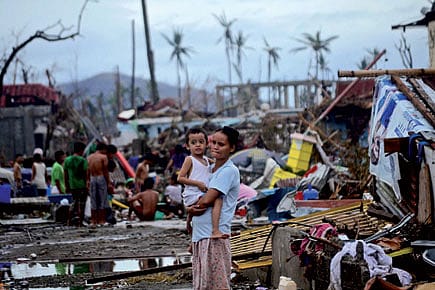Typhoon Haiyan

Many evacuees were found dead as evacuation centres proved incapable of withstanding fierce winds
Typhoon Haiyan, which recently hit the Philippines, is the strongest recorded cyclone ever to hit land, with wind speeds of 313.8 kmph and gusts reaching 378.2 kmph, beating hurricane Camille, which hit the US in 1969 with wind speeds up to 305 kmph, killing 259 people and causing $1.42 billion in damages.
Haiyan originated on 2 November in a low pressure zone in the Pacific Ocean, a few hundred kilometres east-southeast of the Federated States of Micronesia. Travelling generally westwards and quickly gaining intensity, it hit the Eastern Samar region of the Philippines on 7 November. It continued west, sweeping through six central Philippine islands, and emerging over the South China Sea. By the time it struck Vietnam on 10 November, it had weakened to a tropical storm, but still caused at least 14 reported deaths.
The typhoon has led to unparalleled death and destruction in the Philippines. An estimated 10,000 people have been killed in Tacloban city alone, with fears that the death toll will rise significantly. About 660,000 are estimated to have been displaced, though this figure too may rise as rescuers reach other devastated towns. Many people evacuated before the typhoon were found dead, as the evacuation centres proved incapable of withstanding fierce winds.
The destruction across the Philippine islands leaves authorities to conduct relief operations on a scale exceeding any other in the history of this disaster-prone nation. According to news reports, many towns and cities are submerged in water, corpses are festering out in the open, and survivors are in dire need of water and food. There is talk of a state of emergency or martial law being declared in Tacloban, where survivors are fighting over and seizing food, water and goods from stores, homes and relief trucks. A large contingent of police has already been deployed to restore order.
